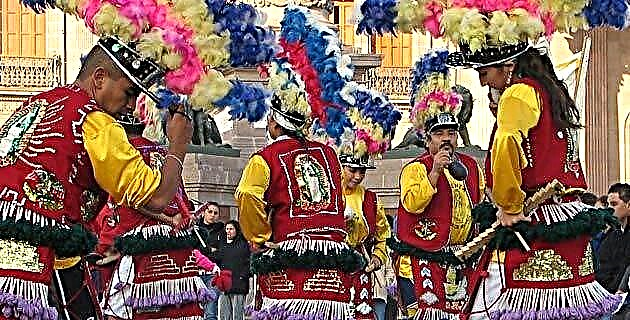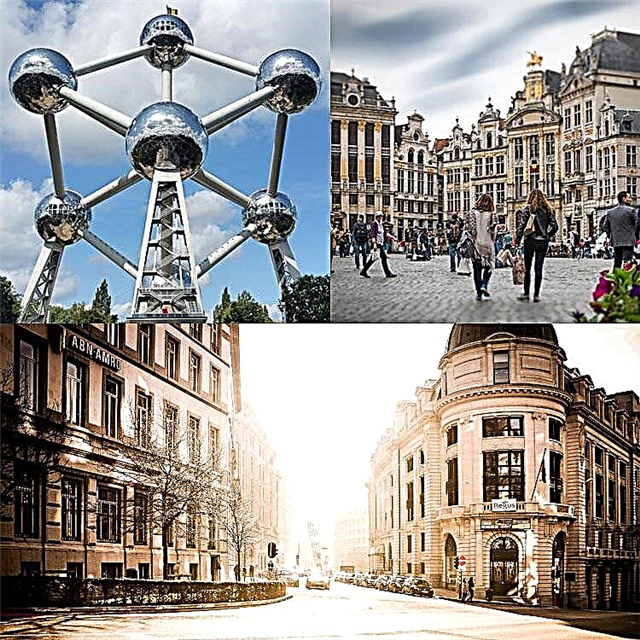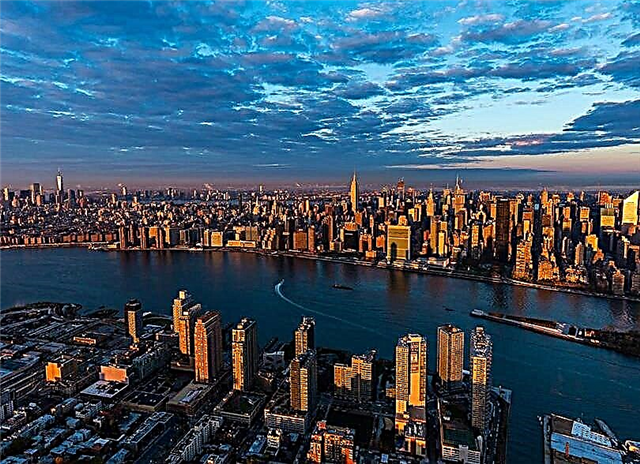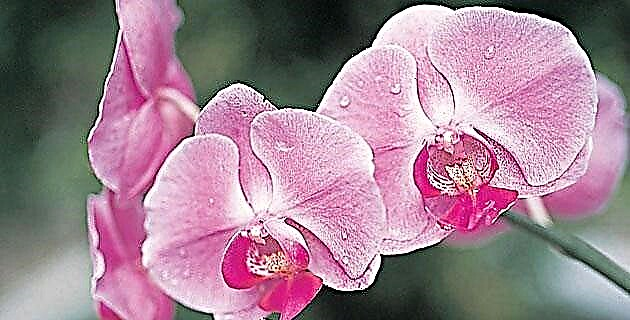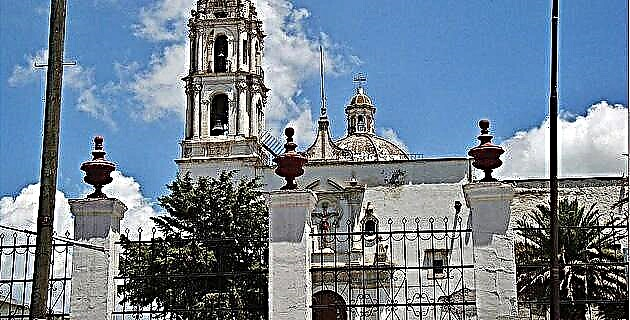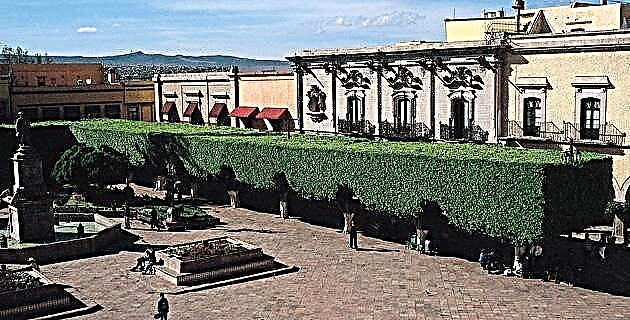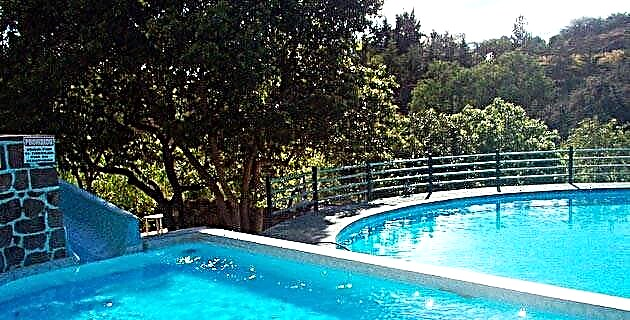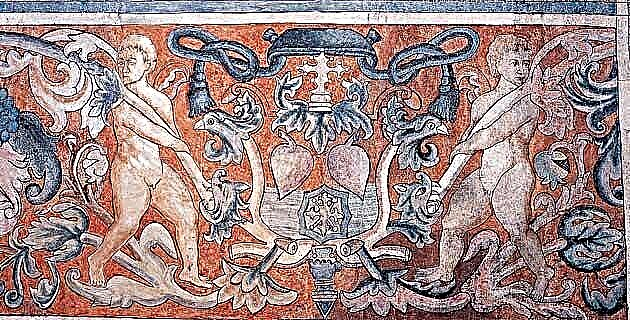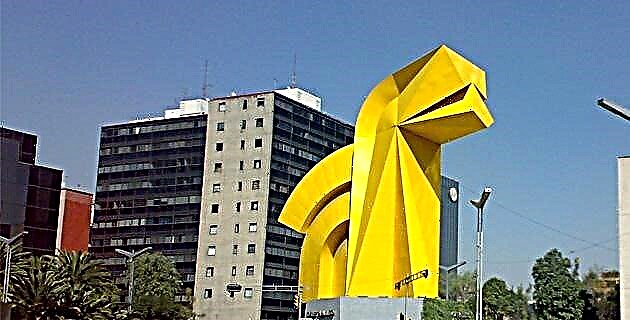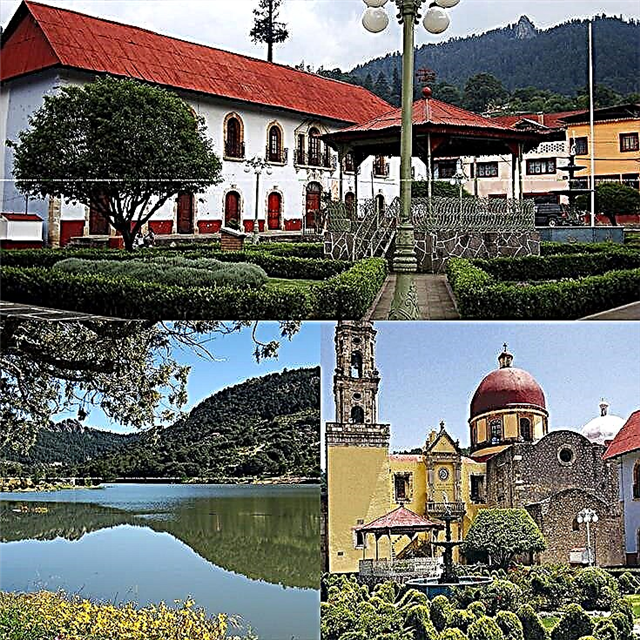Surrounded by extensive and lush alpine forests, with attractive architectural buildings and a magnificent climate, Mineral del Chico shows its mining past and its thriving ecotourism present. This is the complete guide to know the Magic Town hidalguense.
1. Where is Mineral del Chico located?
Mineral del Chico is a beautiful Hidalgo town nestled in the Sierra de Pachuca at almost 2,400 meters above sea level, in the Mountain Corridor of the State of Hidalgo. It currently only has about 500 inhabitants, despite which it is the head of the municipality of the same name, mainly due to its mining past. In 2011 it was incorporated into the Magic Towns system due to its historical and architectural heritage and interest in the practice of ecotourism in the beautiful El Chico National Park.
2. How is the climate of Mineral del Chico?
Mineral del Chico enjoys the typical cool mountain climate of the Hidalgo corridor. The average annual temperature is 14 ° C, with the thermometers dropping to as low as 11 or 12 ° C in the coldest months of December and January. Strong heats are rarities in the Magic Town. The most extreme high temperatures, which occur between April and May, never exceed 25 ° C, while the most intense colds recorded are 3 to 4 ° C. Annually, little more than 1,050 mm of water precipitate in the town, September being the rainiest month, followed by June, July, August and October.
3. What are the main distances to travel?
Pachuca de Soto, the capital of Hidalgo, is only 30 km away, traveling south on the road to El Chico. The state capitals closest to the Magic Town are Tlaxcala, Puebla, Toluca and Querétaro, which are located at 156 respectively; 175; 202 and 250 km. To go from Mexico City to Mineral del Chico you have to travel 143 km. north on Federal Highway 85.
4. How did the town arise?
Like almost all Mexican mines, those of Mineral del Chico were found by the Spanish who arrived in the territory in the middle of the 16th century. The town had several periods of boom and bust, hand in hand with ups and downs in the precious metals business, until the mining activity ceased, leaving the town surrounded by beautiful mountains but without its main economic support. In 1824 it was still called Real de Atotonilco El Chico, changing that year to its current name of Mineral del Chico. The elevation to municipality came in the middle of the mining boom, on January 16, 1869, a day after the state of Hidalgo was created.
5. What are the most outstanding attractions?
After its mining boom and bust, the life of Mineral del Chico has turned around the ecological tourism that takes place in El Chico National Park. Among the countless places to visit in this beautiful protected area are the Valleys Llano Grande and Los Enamorados, Las Ventanas, El Cedral Dam, Peñas del Cuervo and Las Monjas, El Milagro River, El Contadero, Escondido Paraíso and various ecotourism developments. In the small town architecture the Main Square and the Parish of the Immaculate Concepción are distinguished. Also, the mining past is attested by several mines equipped for tourism.
6. What is the Main Square like?
Mineral del Chico was built to the rhythm of its mining prosperity and in it, Spaniards, English and Americans converged at different times, who, together with the Mexicans, left their traces and influences on the buildings of the town. The Main Square of Mineral del Chico, with the Iglesia de la Purísima Concepción and the houses with sloping roofs in front, the kiosk in one of the corners and the wrought iron fountain in the center, constitutes a magnificent example of different cultural imprints in local architecture.
7. What stands out in the Iglesia de la Purísima Concepción?
This neoclassical temple with a quarry façade dates from the 18th century and is the main architectural symbol of Mineral del Chico. The first church on the site was an adobe construction built in 1569. The current church was erected in 1725 and remodeled in 1819. As a curious fact, it should be noted that the machinery of its clock was built in the same workshop from which the one of the famous London Big Ben, both being quite similar.
8. What's in El Chico National Park?
This 2,739 hectare park was decreed by Porfirio Díaz in 1898, making it one of the oldest in the country. It is covered by beautiful forests of oaks, pines and oyomeles, among which impressive rock formations stand out. Several ecotourism centers operate within the park with everything you need to practice different entertainment, such as rock climbing, hiking, mountain biking, sport fishing and camping.
9. What are the Llano Grande and Lovers Valley Valleys like?
Llano Grande is a vast valley of grassy soils, surrounded by beautiful mountains, where being outdoors contemplating the panorama is a gift for the senses. It has a small artificial lake and boats for rent. The Valley of the Lovers is smaller and has striking rock structures that have given it its name. In both valleys you can safely camp, rent horses and ATVs and carry out other ecological activities.
10. What are Windows?
This beautiful place is the one that is at the highest altitude within the El Chico National Park, so it is the coldest and it can even snow in winter. The alpine forest is made up of several rock structures that are called Las Ventanas, La Muela, La Botella and El Fistol. It is a paradise for extreme sports, such as rappelling and climbing, and also for entertainment with less adrenaline, such as camping, observing nature and photography.
11. What can I do at the El Cedral Dam?
The water in this dam is provided by the streams and springs that flow down from the nearby oyomel forest, forming a clean aquatic space in which trout are raised. You may be lucky enough to catch a salmon or rainbow trout for a delicious dinner; if not, you will have to taste it in one of the typical places located near the dam. You can also take a boat ride, zip line, horseback and ATVs. It is possible to rent cabins.
12. Where are the Peñas Las Monjas?
These majestic rock structures are visible from different points of Mineral del Chico and constitute a natural emblem of the town. Its name comes from a legend from the colonial era. The myth tells that a group of nuns and friars from the Franciscan Convent of Atotonilco el Grande came to the place to pay tribute to a very miraculous saint. However, at some point they renounced the pilgrimage and as punishment they were petrified; hence the name of Las Monjas and also that of the Los Frailes formation.
13. What is the interest of the Peña del Cuervo?
This elevation has its summit at 2,770 meters above sea level, making it a spectacular natural viewpoint. From there there are beautiful views of the forests, the town of Mineral del Chico, and the rocky structures known as Los Monjes. The rock formation called Los Frailes, located in the neighboring municipality of El Arenal, in the Mezquital Valley, is also seen a little further away.
14. What can I do in the El Milagro River?
It owes its name to the fact that its riverbed never dries up, not even in times of great drought. It crosses the town of Mineral del Chico with its clean waters that come down from the mountains, among pine, oak and oyomel trees. In its course it creates spectacular corners and nearby you can practice some adventure sports, such as canyoneering and rappelling. Its course is close to some of the mines that gave wealth to the town.
15. What is El Contadero?
This labyrinth of attractive rock formations is one of the most frequented sites in El Chico National Park. Its name is disputed by two local legends. The first indicates that it was the place where the highwaymen entered to outwit their pursuers and count the fruit of their gains in the assaults. The other version says that the herders used to lose animals in the area and therefore counted them frequently, to make sure they did not lose any.
16. What is Paraíso Escondido like?
It is a beautiful crystalline stream that comes down from the mountain, winding between curious rock formations. The stream forms small waterfalls that are worth sitting down to watch to relax body and mind. You can tour the banks of the stream with a guide, which you must hire in advance in the town.
17. What are the other ecotourism developments?
About 20 minutes from Mineral del Chico, next to the rocks of Las Monjas, is La Tanda, a rocky elevation about 200 meters high, with beautiful forests at its feet. Via Ferrata is an ecotourism route developed by the operator H-GO Adventures that offers walks around the place and the possibility of climbing the rock. The fun tour includes zip lines, suspension bridges, ladders, grab bars, and various other entertainment options, including rappelling, zip-lining, canyoneering, and biking. Another attractive ecological park is Carboneras.
18. What can I do at the Parque Ecológico Recreativo Carboneras?
The Carboneras Recreational Ecological Park is another sector of the national park that has been conditioned for the entertainment and fun of tourists. It has long zip lines, almost a kilometer and a half long, which travel through canyons up to a hundred meters deep. It also has trails for day and night walks and is equipped with grills.
19. Can I visit the old mines?
In the El Milagro River Tourist Corridor there are the old mines of San Antonio and Guadalupe, which provided a good part of the precious metals extracted in Mineral del Chico. Some galleries in these mines have been fitted out so that visitors can walk through them safely and appreciate the harsh conditions in which local workers made their living. With your helmet and your lamp you will look like a whole miner.
20. Is there a museum?
Next to the Purísima Concepción temple there is a small Mining Museum, which goes through some tools, old photos and documents, part of the history of Mineral del Chico in the exploitation of minerals and the benefit of precious metals. The entrance to the museum is free.
21. How is the history of the Pan de Muerto of Mineral del Chico?
As in all of Mexico, in Mineral del Chico they offer the bread of the dead on All Souls' Day, only in Pueblo Mágico, they make a piece of bread with a slightly different shape. While in most of the towns and cities of the country the bread has a circular shape with some projections, in Mineral del Chico they do it in the shape of a dead person, distinguishing the arms and legs of the deceased. The tasty pieces are cooked in rustic and traditional wood ovens.
22. What are the main festivals in town?
Mineral del Chico is festive all year round. The main religious celebrations are Holy Week, in which the rain of petals stands out inside the parish temple in the mass of Easter Sunday; the festivities on December 8, the Day of the Holy Cross and the festivities of San Isidro Labrador. Within the framework of the patron saint festivities of the Immaculate Conception, around December 8, the Mineral del Chico Expo Fair is held. In August the colorful Apple and Begonia Festival is celebrated, a fruit and a flower that grow very well in the town.
23. How is the culinary art of Mineral del Chico?
The cuisine of the town is nourished by the main cultures that have forged Mexico, particularly the indigenous and the Spanish, enhanced by other culinary traditions such as the English, which arrived with the British who settled during the mining exploitation. Among these local and adapted dishes are barbecues, preparations with wild mushrooms and pastes. Likewise, the giant quesadillas and recipes with trout are distinctive of the town. La Tachuela, originally from Mineral del Chico, is the emblematic drink and its recipe is secret.
24. What can I bring as a souvenir?
Local artisans are skilled at making metalwork, particularly copper, tin, and bronze. The popular painters of Mineral del Chico are inspired by the beauty of the national park to make decorative paintings, and they also produce pieces such as cups and glasses adorned with natural motifs. They also make figurines, toys, and other small wooden objects.
25. Where can I stay?
Mineral del Chico has a set of accommodations, in the town and its surroundings, in line with the mountain environment of the town. Hotel El Paraíso, at km. 19 of the Pachuca highway, it is embedded in the forest and its picturesque restaurant was built on a rock. Posada del Amanecer, on Calle Morelos 3, is a rustic hotel with an excellent location. Hotel Bello Amanecer, located on the main street of Carboneras, is another clean and cozy mountain hotel. You can also stay at Hotel Campestre Quinta Esperanza, Hotel del Bosque and Ciros Hotel.
26. What are the best places to eat?
At El Itacate del Minero, in the center of town, they serve delicious potato and mole pastes, with a homemade flavor and well-stuffed. La Trucha Grilla, on Avenida Calvario 1, specializes in trout in several delicious recipes. Cero 7 20, on Avenida Corona del Rosal, is a restaurant praised for its flank steak, its mining enchiladas and its craft beer.
Are you ready to go breathe fresh air in El Chico National Park and have fun with its many mountain entertainment? We hope this guide is very useful for you in Mineral de Chico. See you soon.

